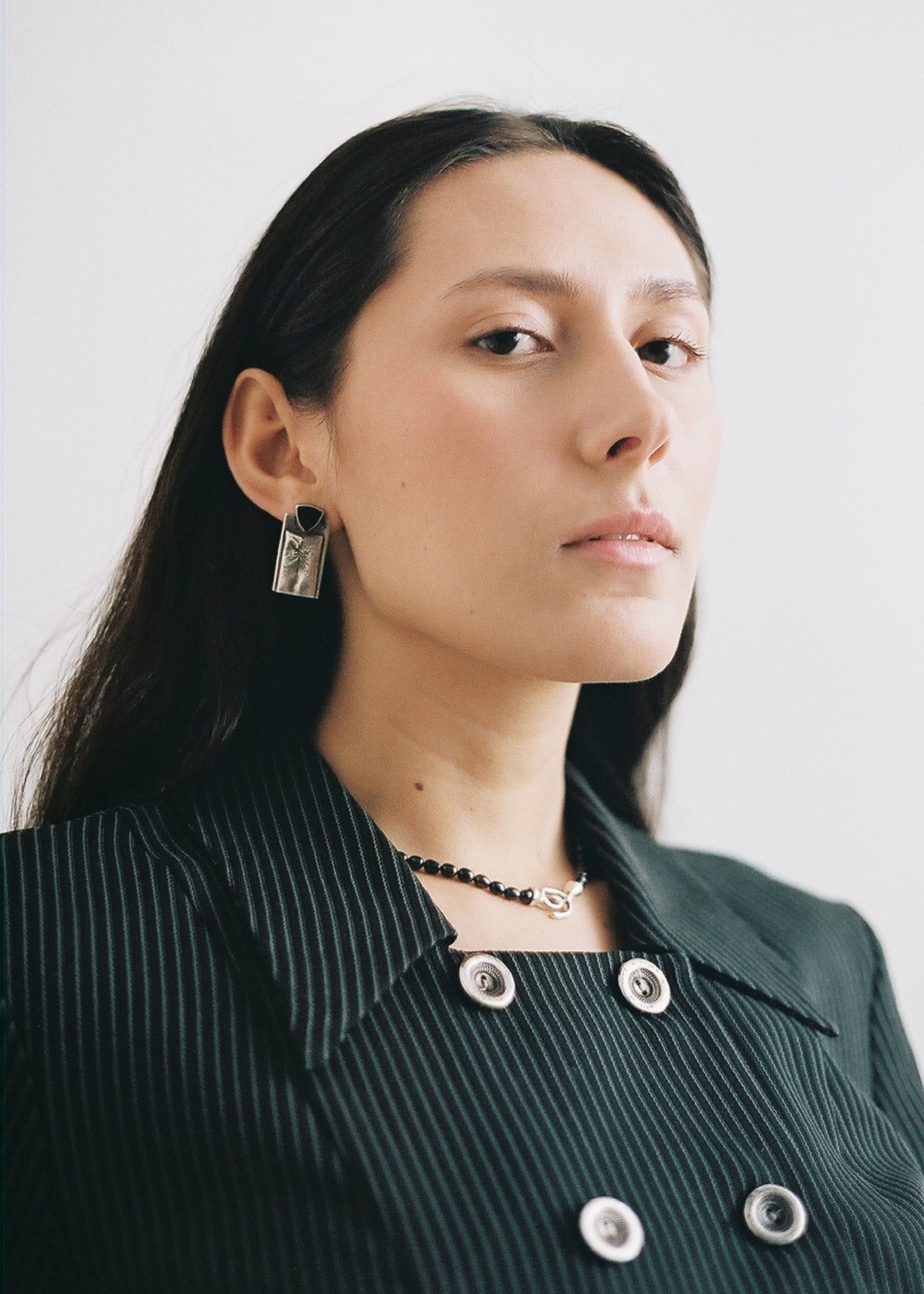Lauren Sundstrom is a feminist, trans advocate, writer, model and student in Vancouver. She believes in the power of language to transform society. She wrote this piece for us because we believe that this community and industry could benefit from more information about inclusive language.

Inclusivity is more than something one needs to pay lip service to. It’s a life-long practice. It’s something that one needs to thread into one’s everyday life.
For far too long, queer people have been marginalized, pushed to the sidelines, silenced and ignored. Isn’t it time that changed?
Perhaps you want to support queer folks, but you aren’t sure how. Heck, it’s hard enough getting the terminology correct. Pronouns? Cisgender? Gender Non-Conforming? What does it all mean? How can you be supportive of a community you admire when the basics of queer language eludes you? Not to worry, this is where I come in.
Incoming is a list of words and phrases you can add to your (hopefully) ever-growing lexicon of inclusive language. It’s 2020 and there’s no longer an excuse to not know these terms – even young celebrities like Kaia Gerber are posting on Instagram about queer icons like Marsha P. Johnson. If Gen Z can do it, you certainly can. It’s up to you to memorize the following terms and phrases, but if you read carefully enough, I might even sprinkle in some advice and etiquette as a treat. In no particular order of importance – not even alphabetical – I present my not-so-comprehensive beginner’s guide to queer terminology.

Cisgender – Let’s start easy. Cisgender is the term for anyone whose gender identity matches the one they were assigned at birth. So for a cisgender man for example, that means you were assigned male at birth and your identity aligns with that. Pretty simple! It’s anyone who doesn’t identity as trans, so probably you (unless you’re trans and reading this to see what I’m feeding the cisgender folks – I see you).
Transgender – This is an umbrella term for anyone whose gender identity or expression does not match the sex they were assigned at birth. I personally fall under this umbrella as a trans woman – I was assigned male at birth but identify as a woman. Get it? Got it? Good.
Gender – Gender is how one identifies, regardless of sex assigned at birth. Gender is a spectrum and many people identify somewhere along it.
Trans woman/man – Trans woman or trans man describes a person assigned male at birth for the former, or assigned female at birth for the latter whose gender identity is that of a woman (again, for the former) or a man (for the latter).

Non-binary – This is a term people are increasingly identifying with. It describes a person who does not identify with the binary system of gender society has set up for them. They could be assigned male or female at birth or they may be intersex – they might also go by gender-neutral pronouns like they or them, but there are no requirements for being non-binary – if a person says they’re non-binary, they’re non-binary, not a man or a woman.
Intersex – Since it was mentioned above, this one ought to be included now. An intersex person is someone who has physical characteristics that they were born with that don’t necessarily match up with being either male or female. This can include a host of “conditions” (note: there is nothing medically wrong with intersex people) that might be apparent right at birth or they may not become apparent until later in life. For example, a person assigned female at birth might have external genitalia that aligns with that assignment – so a vulva – but they actually have XY chromosomes and no uterus, something that isn’t discovered until the child is 17 or 18 and hasn’t had a first period yet. People who are intersex may have gender identities that align with the sex they were assigned at birth or they might not – identity and sex are two separate, but often intersecting, concepts. Doctors used to considered being intersex as a “social emergency” and would often perform damaging, non-consensual surgeries on babies to “correct” their genitalia. The intersex community is rallying against this and is imploring folks to view sex on a spectrum as we do gender.

Queer – As language is fluid and the dictionary definitions of words are constantly changing, please note that this is not usually considered a pejorative term any longer. It’s meant to describe a sexuality or gender identity that does not conform to established ideals of sexuality or gender identity. Often people use it because they have intersecting identities – for example, a trans woman who’s a lesbian – or because they see it as an inclusive term without hard and fast rules.
Gay – Okay, really? If you don’t know this one, I’m not sure I can help you, but here it is anyway: homosexual. A person who is attracted to folks of the same gender as them. M4M. W4W. Get it? Great.
Lesbian – See above, but lady edition. Gay can be used for men or women, but some women like to identify strictly as lesbian, which is great.
Bisexual – A person who is attracted to both men and women.
Pansexual – A person who is attracted to people regardless of gender. Some folks believe this to be a more inclusive term than bisexual, but both are fine. You’re welcome to identify with whatever term best suits you.
Asexual – This describes a person who does not have sexual feelings for men, women or non-binary folks. Asexual people, however, can and do have romantic feelings for people, sex just usually isn’t a powerful motivator.

Two-spirit – An umbrella term used by ingidenous folks that bridges the gap between western and indigenous understandings of gender and sexuality. It’s an umbrella term because each nation has its own interpretation of the meaning of two-spirit, but it often encompasses the concept of a “third gender.” Colonization stripped this identity away from many indigenous cultures, but we are seeing a resurgence of the use of this term in the last 20-30 years.
Gender Non-Conforming – This is a term for anyone whose gender expression does not fit with what society deems is appropriate for the gender the person identifies with and/or the sex they were assigned at birth. This is a broad term that can be interpreted in many different ways. A person whose body and face traditionally aligns with what we’ve deemed “male” who prefers to wear feminine clothing might be considered gender non-conforming. This person might be a cisgender man or a trans man – the point is, gender non-conforming people are visible and intentional in their presentation. And it’s often beautiful.
Pronoun – This is a word that functions as a reference for a person. In English, it is gendered – he/him or she/her being the most binary options. In recent years, many folks have started using gender neutral pronouns like they/them. Here’s a hot tip: if you’re ever unsure of a person’s pronouns (really, you should never assume a person’s pronouns, but I digress), you should try introducing your own along with your name to open the door to allow that person to introduce their pronouns, too! Here’s an example: “Hi, my name is Lauren and my pronouns are she/her.” This also tells the person you’re introducing yourself to that you’re not a regular mom, you’re a cool mom – aka, you’re creating a safe space. One day, I dream that pronoun introductions will be as socially acceptable as introducing your name.
Drag queen/king/artist – Drag is an art form that uses gender as a playful tool. Typically we consider drag queens to be people who identify as men who dress up in lavishly feminine ways, while drag kings are people who identify as women who dress up in very masculine ways. Drag, however, has become more fluid where this is concerned – because people of varying gender identities perform drag, the term “drag artist” has gained more traction in recent years.

Sex assigned at birth – This is term refers to the sex you were assigned based on the appearance of your genitals at birth – it’s always male or female, although some regions are allowing birth certificates to have an “X” in place of “F” or “M”. Along with sex assigned at birth comes the following acronyms: AMAB, which is “assigned male at birth” and AFAB, which is “assigned female at birth.” Those two acronyms should not be confused with ACAB, which stands for “all cops are bastards,” a very true statement (while sex assignment isn’t always true for the individual).
Now, again, this list is neither complete nor comprehensive, but it is a good start and I hope it motivates you to do your own research.
There’s a plethora of information around queer identities and sexualities to explore and Gen Z is absolutely killing the game where this is concerned (speaking as a 30-year-old Millennial grandma).
Seriously, go look at what they’re doing on Tik Tok.
I hope you feel a little bit more enlightened, and please do feel free to refer to this list anytime you need to.
The landscape is shifting where gender and sexuality is concerned, and it’s time to change our perspectives to ones that are more fluid and inclusive.
Words by Lauren Sundstrom
Art by Paula Lanzador
Paula is a artist, mother, and makeup artist at Nobasura talent agency.
Please follow this link to resources against racism.





